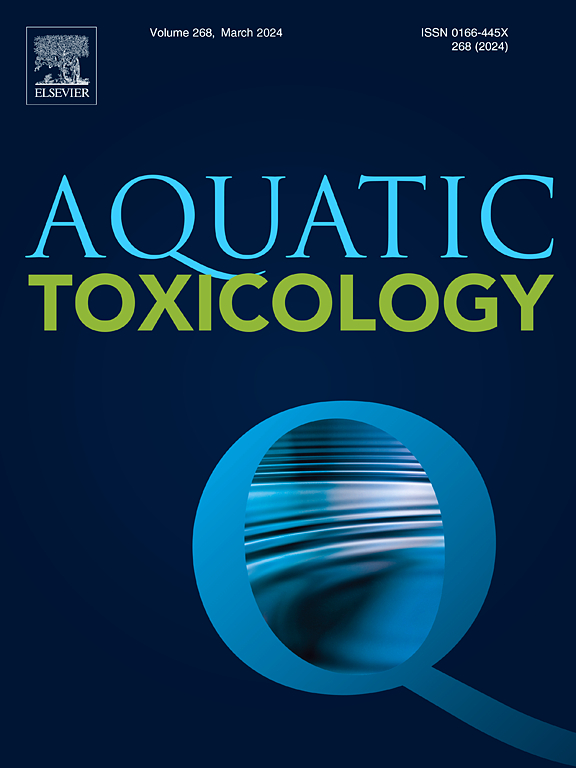Eco-environmental responses of Eichhornia crassipes rhizobacteria community to co-stress of per(poly)fluoroalkyl substances and microplastics
IF 4.1
2区 环境科学与生态学
Q1 MARINE & FRESHWATER BIOLOGY
引用次数: 0
Abstract
The stabilization of rhizobacteria communities plays a crucial role in sustaining healthy macrophyte growth. In light of increasing evidence of combined pollution from microplastics (MPs) and per- and polyfluoroalkyl substances (PFASs), Selecting typical floating macrophyte as a case, this study explored their impacts using hydroponic simulations and 16S rRNA high-throughput sequencing. A total of 31 phyla, 77 classes, 172 orders, 237 families, 332 genera, and 125 rhizobacteria species were identified. Proteobacteria (16.19% to 57.70%) was the dominant phylum, followed by Bacteroidota (12.34% to 44.48%) and Firmicutes (11.31% to 36.36%). In terms of α-diversity, polystyrene (PS) MPs and PFASs significantly impacted community abundance (ACE and PD-tree) rather than evenness (Shannon and Pielou) compared to the control. βMNTD and βNTI analyses revealed that PS MPs enhanced deterministic assembly processes driven by F-53B and GenX, while mitigating those induced by PFOA and PFOS. Contamination treatments narrowed the ecological niche breadths at both the phylum (5% (PS) to 49.91% (PS & PFOA)) and genus levels (8% (PS) to 63.96% (PS & PFOA)). Functionally, MPs and PFASs decreased the anaerobic capacity and ammonia nitrogen utilization of rhizosphere bacteria. This study enhances our understanding of the microecological responses of macrophyte-associated bacteria to combined MP and PFAS contamination and offers insights into ecological restoration strategies and mitigating associated environmental risks.
Eichhornia crassipes 根瘤菌群落对全(多)氟烷基物质和微塑料共同胁迫的生态环境响应。
根瘤菌群落的稳定对维持大型浮游植物的健康生长起着至关重要的作用。鉴于越来越多的证据表明微塑料(MPs)和全氟烷基及多氟烷基物质(PFASs)造成了综合污染,本研究选择了典型的浮游大型底栖生物作为案例,利用水培模拟和 16S rRNA 高通量测序技术探讨了它们的影响。共鉴定出 31 个门、77 个类、172 个目、237 个科、332 个属和 125 个根瘤菌种。蛋白菌门(16.19%-57.70%)是最主要的菌门,其次是类杆菌门(12.34%-44.48%)和固着菌门(11.31%-36.36%)。就 α 多样性而言,与对照组相比,聚苯乙烯(PS)多聚物和全氟辛烷磺酸对群落丰度(ACE 和 PD-tree)有显著影响,而对均匀度(Shannon 和 Pielou)无显著影响。βMNTD和βNTI分析表明,PS MPs增强了由F-53B和GenX驱动的确定性组装过程,同时减轻了由PFOA和PFOS诱导的组装过程。污染处理缩小了门级(5%(PS)到 49.91%(PS 和 PFOA))和属级(8%(PS)到 63.96%(PS 和 PFOA))的生态位广度。从功能上看,MPs 和 PFASs 降低了根瘤菌的厌氧能力和氨氮利用率。这项研究加深了我们对巨藻相关细菌对 MP 和 PFAS 污染的微生态反应的理解,并为生态恢复策略和降低相关环境风险提供了启示。
本文章由计算机程序翻译,如有差异,请以英文原文为准。
求助全文
约1分钟内获得全文
求助全文
来源期刊

Aquatic Toxicology
环境科学-毒理学
CiteScore
7.10
自引率
4.40%
发文量
250
审稿时长
56 days
期刊介绍:
Aquatic Toxicology publishes significant contributions that increase the understanding of the impact of harmful substances (including natural and synthetic chemicals) on aquatic organisms and ecosystems.
Aquatic Toxicology considers both laboratory and field studies with a focus on marine/ freshwater environments. We strive to attract high quality original scientific papers, critical reviews and expert opinion papers in the following areas: Effects of harmful substances on molecular, cellular, sub-organismal, organismal, population, community, and ecosystem level; Toxic Mechanisms; Genetic disturbances, transgenerational effects, behavioral and adaptive responses; Impacts of harmful substances on structure, function of and services provided by aquatic ecosystems; Mixture toxicity assessment; Statistical approaches to predict exposure to and hazards of contaminants
The journal also considers manuscripts in other areas, such as the development of innovative concepts, approaches, and methodologies, which promote the wider application of toxicological datasets to the protection of aquatic environments and inform ecological risk assessments and decision making by relevant authorities.
 求助内容:
求助内容: 应助结果提醒方式:
应助结果提醒方式:


